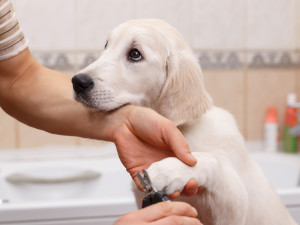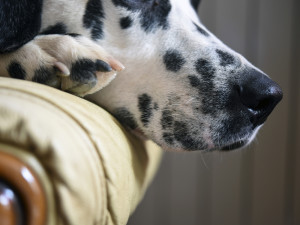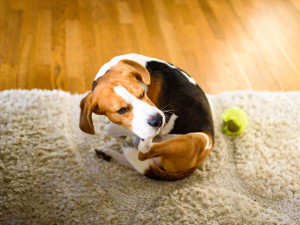How Often Should You Wash Your Dog?
“If your dog is stinky or looks dirty, wash them!” Plus, more tips from LA dog groomer Jess Rona
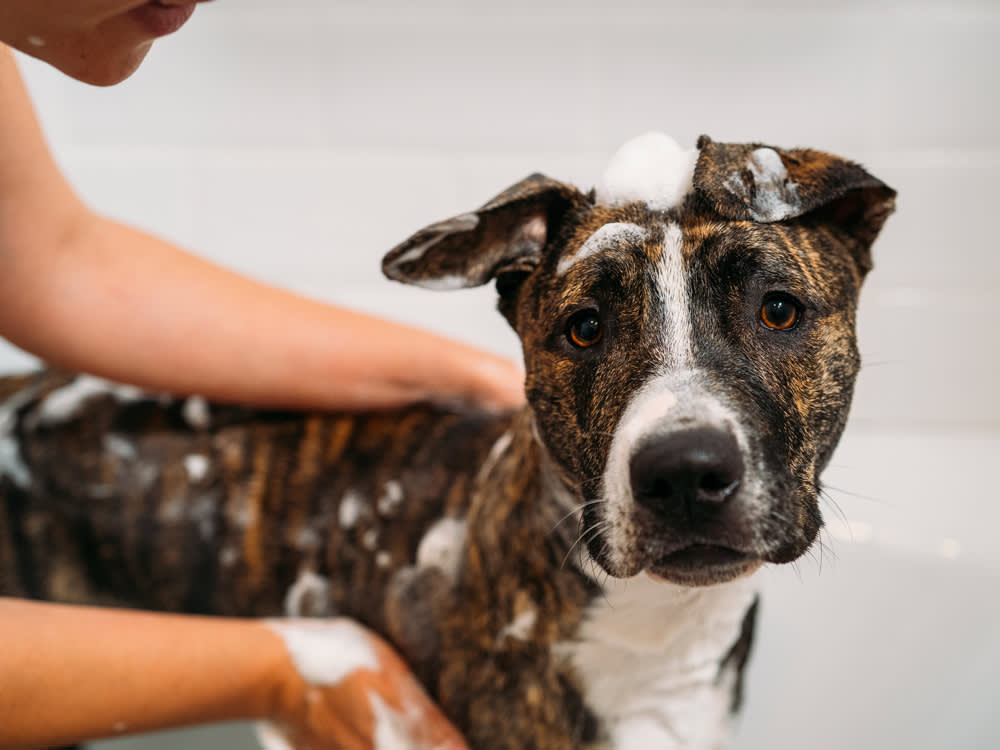
share article
Ever since ancient humans and wolves first set aside their differences and decided to start cohabitating, humans have looked at their lovely, wild, stinky canine companions and wondered: ‘How often should I wash my dog?’
How often should you wash your dog?
The frequency of bathing “just depends on the dog,” says Jess Rona of Jess Rona Groomingopens in a new tab in Los Angeles, who has been dubbed the Vidal Sassoon of dog beauty – by Katy Perry, no less. She has some clients who bring their dogs into her salon once a week because they like them to be extra clean or ‘extra fluffy’, while others bring them in every other month.
Ultimately, she says, the appropriate amount of washing and grooming is “really up to the person and how clean they want their pet”, adding that every dog, whether they’re a long-haired Lhasa Apso or a short-haired Pit Bull mix, benefits from regular, professional grooming. It is important to consult a veterinarian or qualified groomer to determine the best bathing schedule for your dog. Bathing can also help to reduce shedding, minimise matting, and improve a dog‘s overall appearance and comfort.
Consider your dog’s breed, coat type, activity level and skin condition
Jess generally recommends a monthly grooming appointment for all dogs, regardless of their size or coat length. These regular appointments are essential, not just for your dog’s hygiene, she explains, but also for their health – each grooming is an opportunity for a professional to take a look at your dog’s skin, coat and mouth, and make sure everything looks healthy and identify potential issues before they progress.
Factors that affect how often a dog needs to be bathed
There are a few factors that affect how frequently you should bathe your dog.
Budget: if you’re on a tighter budget, Jess says you can alternate appointments. “One month, do a bath and a short-ish haircut, then the next month do just a ‘bath and tidy.’” Bath and tidy appointments are generally less expensive and less time consuming, and should include getting your dog’s nails trimmed and having their teeth brushed. “It’s not just a wash and dry,” she explains. “There’s someone looking your dog over and making sure they’re OK.”
Type of coat: long-haired and curly-haired dog breeds generally require more regular bathing to keep their coats from matting – at least once every four to six weeks, with regular brushing between baths to maintain the coat. Advice also states that hairless breeds, such as the Chinese Crested, require weekly baths. And you actually don’t want to over-bathe thick or double coats on breeds such as Labrador Retrievers because it could strip too much oil from their skin.
Skin conditions: your dog might have a skin condition or infection that means they need frequent application of a prescription shampoo. In this case, they may need to be bathed a few times a week. Follow your vet’s recommendations.
Activity level: if your dog is romping around in the mud on a regular basis, of course you will probably want to bathe them more often. If your dog has a short coat, you can probably wipe them down yourself to get the dirt off at home. Likewise, if your pup lounges indoors most days, you may be able to get away with bathing them less frequently.
Puppy status: Jess recommends bringing them in frequentlyopens in a new tab to ensure they start to feel comfortable with the bathing and grooming process – roughly twice a month for the first six months. And then a month after your first appointment, schedule the first haircut (if needed) so they can get used to the process.
An important, if not overly graphic word of advice from Jess: “You should never get your dog’s anal glands expressed at a groomer.” Though it has been a fairly common practice in the past, the service is actually outdated now, and that regular squeezing of the anal glands can actually tear the surrounding muscles and create problems for the dog. Dogs generally express their own anal glands naturally when they poop, Jess says, adding, “If your dog is scooting a lot, it does not always mean there’s an anal gland problem – they might just have an itchy butt.”
Tips for at-home grooming in between appointments
Sometimes, financial constraints or a particularly messy day at the park mean that an at-home grooming is in order. If you’re overseeing your dog’s bath time, Jess’s two biggest tips are: always condition your dog after bathing; and get a big slick brush with long, tightly packed metal pins that can easily penetrate into a dog’s undercoat and help remove matted hair.
As for the order of operations, Jess recommends brushing your dog down with the slicker brush first, then giving them a bath, then conditioning them, and then letting them fully dry before brushing them again. “Don’t brush a wet coat,” she warns. “Slicker brushes have pins, so you can accidentally scratch the skin if it’s wet. There’s no buffer between the brush and the skin.”
Jess also notes that you can do the majority of bathing at home, and still occasionally go and get some a la carte touch-ups done on your dog that you might not feel as comfortable doing yourself, like an ear cleaning or a nail trim.
Trust that you’ll know when it’s time to wash your dog
Dog cleanliness is not rocket science. If you take your dog to the park and they roll in a bunch of mud, you probably want to treat your dog to a bath when you get home, both for the dog’s sake, and for the sake of your furniture. “Honestly, use your judgment,” says Jess. “If your dog is stinky or looks dirty, wash them!”
Frequently asked questions
Can I bathe my dog too much?
Yes, you can! Dogs’ skin can become itchy, flaky, dry and sensitive if they are washed too frequently or with a harsh product that isn’t formulated for dogs.
What if my dog hates baths?
There are strategies you can use to reduce your dog’s bath anxiety such as getting an extendable shower hose and, of course, rewarding them with treats.
References
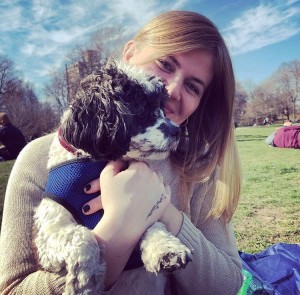
Madeleine Aggeler
Madeleine Aggeler is a freelance journalist and copywriter in Washington, D.C. Previously, she was a writer at New York magazine’s The Cut. She lives with her dog, Cleo, who works primarily as a foot warmer.
Related articles
![The-Wildest_Editorial_Puppy-grooming-tips_Hero_1000x750_v01.jpg]() opens in a new tab
opens in a new tabPuppy Grooming 101: Tips For Grooming Your New Puppy
Professional dog groomer Jess Rona’s puppy grooming tips
![Spotted dog with a close up of his nose]() opens in a new tab
opens in a new tabWhat to Do If Your Dog Has a Cracked, Broken or Torn Nail
A vet explains when you can treat the injury at home – and when it’s best to seek professional help
![Beagle dog scratches himself on carpet.]() opens in a new tab
opens in a new tabMange in Dogs: Causes, Symptoms and Treatment For Canine Skin Condition
Yeah, we know. Luckily there are some steps you can take
